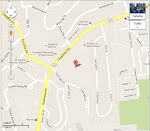On Saturday, Sept 27, 2014 from
10am-2pm, the US Drug Enforcement Administration (DEA) will hold its 9th
national “Drug Take-Back Day” to enable patients, caregivers and pet owners to
properly dispose of unwanted prescription drugs and over-the-counter
medications at no cost.
Since launching the nationwide Drug Take-Back Day effort in 2010, the DEA has collected more than 3.4 million pounds (1,733 tons) of prescription medications.
Help to protect our young people (and
others) from overdoses and/or accidental ingestion of prescription medications. Help to keep our water supply safe – don’t flush
unwanted medications down the sink or toilet!
For a searchable list of collection sites nationwide, click here.
The following additional information
about the importance of proper disposal of unwanted prescription medications is
taken from the Pennsylvania Resources
Council website. The
mission of the PRC is to lead and
promote individual and collective actions to preserve Pennsylvania’s
environmental resources for each generation.
There are numerous reasons why
prescription and over-the-counter pharmaceuticals become unwanted or unneeded.
Many people stop taking drugs due to side-effects, their lack of effectiveness,
or quicker recovery periods than anticipated. And medications often reach their
expiration dates before they are completely used. But people are also being
prescribed and buying more drugs, per-person, than ever before in this country.
On a national level, estimates point to upwards of 200 million pounds of pharmaceutical waste being generated each year. Over the past few years, pharmaceuticals and endocrine disruptors have been detected in growing amounts in surface and drinking water sources around the country. This issue has been increasingly covered in scientific literature and the mainstream media. A series of Associated Press stories brought the issue to the national spotlight in 2008.
On a national level, estimates point to upwards of 200 million pounds of pharmaceutical waste being generated each year. Over the past few years, pharmaceuticals and endocrine disruptors have been detected in growing amounts in surface and drinking water sources around the country. This issue has been increasingly covered in scientific literature and the mainstream media. A series of Associated Press stories brought the issue to the national spotlight in 2008.
President Obama signed the "Secure and Responsible Drug Disposal Act of 2010" into law on October 12, 2010. The law removes a key barrier to creating statewide programs that allow residents to safely return and dispose of leftover medications. The legislation is intended to support the creation of medication take-back options that reduce prescription drug abuse and reduce the amount of pharmaceuticals getting into the environment. Once the new law is implemented, providers of medication take-back programs will have more options for where and how they set up programs that accept controlled substances, such as OxyContin, Vicodin, and Ritalin.
Currently, only law enforcement can accept narcotics and other controlled substances from residents. The intent of this federal law is to authorize other convenient community return locations – like pharmacies – for secure disposal of controlled substances. Currently pharmacy take-back programs (the legality of these vary from state–to-state) around the country can only accept the return of over-the-counter medications and prescription medications that are not controlled substances. However, controlled substances make up about 11% of prescription drugs sold.

















No comments:
Post a Comment